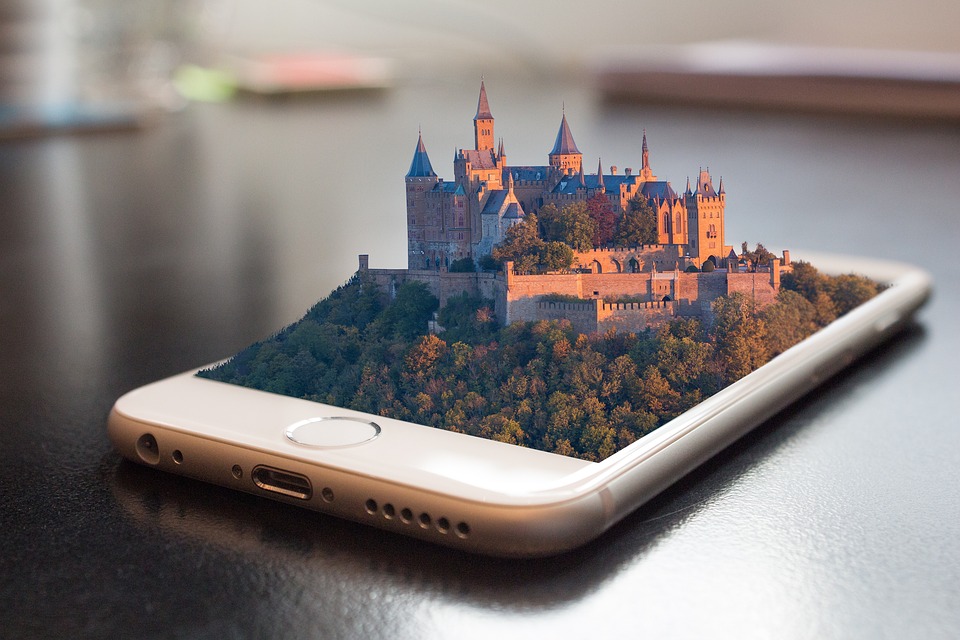
Nothing is impossible: A beautiful new world of online shopping
Innovation
Posted 30 Nov 2017
At the point of sale, it’s all been done before: feeling, smelling and tasting have long been part of the shopping experience, as going through multisensory experiences builds better customer loyalty. But what if I cannot buy my product in person? Must I consequentially give up all the sensory and haptic experiences of shopping? Not at all, says new research. Developers are currently working on revolutionizing online shopping through “Haptic eCommerce.” In the upcoming decades, online shopping will catch up in sensory fragrances and tastes with the help of innovative digital technology.
Sales from the EuroShop 2017 have shown that the usual marketing themes of using emotions and storytelling in retail are no longer as important. The increasing trend of digitalization makes it possible to create multisensory experiences in-store. One of the greatest advantages of in-store shopping over online shopping is being able to experience an item beyond just an image. The new Weber Original Stores illustrate how the different senses can show consumers what makes an item worth buying. In this new concept, noise, smell and vision are all equally important in conveying the differences in barbecuing with a charcoal, gas or electric grill. For example, in selling a coal grill, a video of the grill is played, accompanied by the subtle smell of barbecue and the crackling of the coals. But how do we integrate sensory elements into online shopping?
Attempts to convey smell or touch despite a spatial distance have existed for some time, but the field has come a long way through recent developments in the fields of robotics, augmented and virtual reality and artificial intelligence. The number of companies and researchers looking for ways to convey all five senses through online shopping has risen.
Almost all these developments have been based off of the smartphone. David Edwards, a professor at the Ivy League university Harvard, developed an iPhone app with one of his students which transmits odors as short messages. In order to send these smells, you only need the app “oSnap,” but to receive the odors, a somewhat unwieldy device called an “oPhone” is necessary. More than 300,000 different smells – so-called oNotes – are transmissible through the “scent-based mobile messaging,” with works through odor cartridges. Unfortunately, the product has not taken off – in 2014, in Indiegogo campaign attempting to put the oSnap and the oPhone in mass production failed. However, in 2016, American developers created a smartphone app that controls an odor-synthesizing device, Cyrano, which is meant to provide the right aroma for every mood. Cyrano has three nozzles, which can emit different smells composed of twelve aromas. Another interesting development is Scentee, which can turn any smartphone or tablet into an air freshener. A small device attached to a headphone jack, Scentee emits a fragrance, such as lavender or strawberry, whenever the user receives a notification. The user can also manually control the device to emit the fragrance and can program timed releases of the aromas. What may seem like a toy at first glance shows what is possible with current technology and what it can be used for in the future. For retailers, it opens many new opportunities – from selling classic perfumes to groceries to online tourism. Not only perfumes, but scents of wine, coffee, vacation resorts or simply the smell of the sea can be digitally conveyed. Consumers get a fuller sense of a product or a location.
Technology can also simulate taste. For several years, developers have been working on so-called “electronic lollipops,” electrodes that can produce different flavours through contact with the tongue. Sweet, sour, salty or bitter can now be transmitted electronically. Currently researching this topic is Adrian David Cheok, a professor of pervasive computing in the City University London, the director of Mixed Reality Labs and the inventor of Scentee. Check studies how to add virtual food to virtual tastes and textures. This would make it possible to taste food or distance digitally over any distance.
But how can we create the sense of touch? The internet cannot help you experience an item you might want to buy through touch, such as the feeling of a soft wool sweater. However, developers are also researching how technology can convey the sense of touch. In his Mixed Reality Lab, Professor Cheok developed a ring called RingU that can transmit touch. If you press your ring, another person with a connected ring can feel the pressure. This means that in the future, we may be able to virtually try on or even smell a piece of clothing at home.
Is this all speculation or can it soon be reality? How far in the future are we talking? Some experts say that within the next five to ten years, haptic experiences will be ubiquitous in online shopping. No matter whether this is true or not, one thing is certain: digital technologies will become much more immersive and will play a huge role in our everyday lives. Multisensory technologies are becoming more and more prevalent so a consumer can shop with all five senses. Online shopping will certainly profit from a mass rollout of such technology. But whether these opportunities will really boom and will see widespread use, it is yet to be seen. However, these developments are always fascinating!
Take a look at the topics: Industry 4.0, automation, Cobots and Co.

– This article was written by Helen Mack, Account Director at HBI.